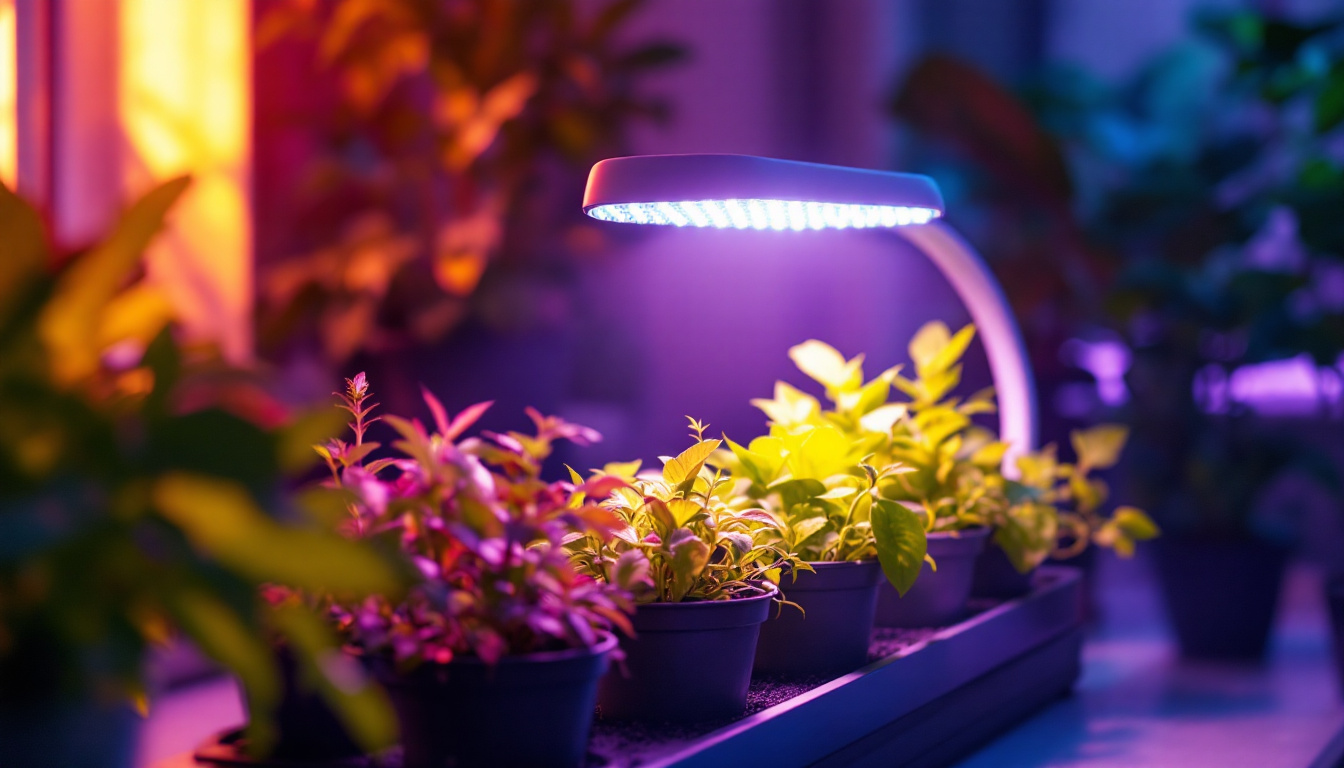
In the rapidly evolving world of horticultural lighting, the importance of effective grow lights cannot be overstated. For lighting contractors, understanding the nuances of products like the Hydrofarm grow light is critical to delivering optimal solutions for clients. This article delves into the top strategies that lighting contractors can adopt to maximize the benefits of Hydrofarm grow lights, enhancing both plant growth and client satisfaction.
Before diving into specific strategies, it’s essential to grasp the fundamental principles behind grow lights. Hydrofarm grow lights are designed to provide the necessary spectrum and intensity of light that plants require for photosynthesis. Unlike traditional lighting, grow lights focus on delivering specific wavelengths that promote growth, flowering, and fruiting. This targeted approach not only enhances plant health but also maximizes the efficiency of energy use, making it a sustainable choice for both commercial and home growers.
In addition to their role in photosynthesis, grow lights can also influence other physiological processes in plants, such as germination and nutrient uptake. By simulating natural sunlight, these lights help create an optimal environment for plants to thrive, regardless of external weather conditions. This is particularly beneficial for urban gardeners or those living in regions with limited sunlight, allowing them to cultivate a diverse array of plants year-round.
There are several types of grow lights available on the market, each with its unique advantages. LED grow lights are favored for their energy efficiency and longevity, while fluorescent and HID (High-Intensity Discharge) lights offer different benefits in terms of cost and output. Understanding these types allows contractors to recommend the most suitable options based on their clients’ specific needs. For instance, while LED lights may have a higher initial cost, their lower energy consumption and longer lifespan can lead to significant savings over time.
Moreover, some grow lights come with adjustable spectrums, allowing users to customize the light output according to the specific growth phase of their plants. This flexibility can be particularly advantageous for growers who wish to experiment with different plant varieties or those who are looking to optimize their yields. As technology advances, new hybrid systems combining the benefits of various light types are emerging, providing even more options for tailored plant care.
The light spectrum plays a crucial role in plant development. Plants primarily utilize blue light for vegetative growth and red light for flowering. Hydrofarm grow lights are engineered to provide a balanced spectrum that caters to various growth stages, ensuring that plants receive the light they need at the right time. Contractors should emphasize this aspect when discussing options with clients, as it directly impacts plant health and yield. Understanding the nuances of light spectrum can empower growers to make informed decisions that enhance their gardening success.
Additionally, the concept of light duration, or photoperiod, is equally important. Different plants require varying lengths of light exposure to trigger specific growth responses. For example, some flowering plants may need longer periods of light to initiate blooming, while others may thrive under shorter light cycles. By educating clients on the interplay between light spectrum and duration, contractors can help them create tailored lighting schedules that align with the natural rhythms of their plants, ultimately leading to healthier growth and more bountiful harvests.
Each client may have different requirements based on their specific growing conditions and goals. Lighting contractors must take the time to evaluate these needs thoroughly. This evaluation process can significantly influence the effectiveness of the grow lights chosen. A well-informed selection not only enhances plant health but can also lead to increased yields and energy efficiency, ultimately benefiting the client’s bottom line.
The first step in evaluating client needs is to assess the growing environment. Factors such as space size, plant type, and existing infrastructure play a pivotal role in determining the appropriate lighting solution. For instance, a small indoor garden may benefit from compact LED fixtures, while a larger greenhouse might require a combination of HID and supplemental lighting. Additionally, considerations such as ceiling height, ventilation, and temperature control systems are crucial. Proper air circulation can help mitigate heat generated by certain lighting systems, ensuring that plants remain healthy and productive.
Different plants have varying light requirements. For example, leafy greens thrive under cooler light temperatures, while fruiting plants often require warmer light. By understanding the specific types of plants a client is growing and their respective growth stages, contractors can tailor their lighting recommendations to optimize growth and productivity. Moreover, it is essential to consider the photoperiod needs of different plants; some may require extended light hours for flowering, while others may flourish under shorter days. This knowledge allows contractors to create a customized lighting schedule that aligns with the natural growth cycles of the plants, ensuring they receive the right amount of light at the right time for maximum yield.
Energy efficiency is a primary concern for many clients, especially in commercial growing operations. Hydrofarm grow lights are designed with energy savings in mind, and lighting contractors can leverage this feature to enhance their proposals.
LED grow lights are known for their low energy consumption and long lifespan. By recommending LED options from Hydrofarm, contractors can help clients reduce their energy bills while still achieving high-quality plant growth. Additionally, the reduced heat output of LEDs minimizes the need for extensive cooling systems, further enhancing energy efficiency.
Integrating smart lighting controls can significantly improve energy efficiency. These systems allow for automated adjustments based on environmental conditions, ensuring that lights are only used when necessary. By educating clients on the benefits of smart controls, contractors can provide a more comprehensive lighting solution that maximizes energy savings.
Proper installation of grow lights is crucial for achieving the best results. Lighting contractors should adhere to best practices to ensure that clients receive the maximum benefits from their Hydrofarm grow lights.
The placement and height of grow lights can dramatically affect their performance. Lights should be positioned at an appropriate distance from plants to prevent burning while ensuring adequate light penetration. Contractors should provide guidance on how to adjust the height as plants grow, maintaining an optimal distance throughout the growth cycle.
Safety is paramount when installing electrical equipment. Contractors must ensure that all wiring is up to code and that fixtures are securely mounted. Additionally, providing clients with information on safety protocols can help prevent accidents and ensure a smooth operation of the lighting system.
Once the grow lights are installed, ongoing maintenance and client education are vital for long-term success. Lighting contractors should establish a maintenance plan and provide clients with the knowledge they need to care for their systems effectively.
Regular maintenance checks can help identify potential issues before they become significant problems. Contractors should encourage clients to inspect their grow lights periodically, checking for any signs of wear or malfunction. This proactive approach can extend the lifespan of the lighting system and ensure optimal performance.
Educating clients about light management is essential for maximizing the benefits of grow lights. This includes teaching them how to adjust light schedules, monitor plant responses, and recognize signs of light stress. By empowering clients with knowledge, contractors can foster a more successful growing environment.
The integration of technology in horticultural lighting is transforming the industry. Lighting contractors should stay informed about the latest advancements and consider how they can enhance their offerings.
Light sensors and timers can automate the lighting process, ensuring that plants receive the right amount of light at the right times. Contractors can recommend these technologies to clients, highlighting their ease of use and ability to optimize plant growth while reducing energy consumption.
Advanced lighting systems, such as those that incorporate dynamic spectrum control or UV light, are becoming increasingly popular. These systems allow for tailored light recipes that can enhance specific growth stages or plant types. Contractors should explore these options and consider how they can integrate them into their offerings to provide clients with cutting-edge solutions.
Establishing long-term relationships with clients is essential for lighting contractors. By providing exceptional service and ongoing support, contractors can foster loyalty and encourage repeat business.
After installation, follow-up is crucial. Contractors should check in with clients to ensure that their systems are functioning correctly and that they are satisfied with the results. Offering ongoing support and being available to address any questions or concerns can help build trust and credibility.
As technology evolves, clients may be interested in upgrading their systems or adding new features. By staying informed about the latest products and trends, contractors can proactively suggest upgrades that align with their clients’ needs, thus enhancing their overall experience and satisfaction.
In the competitive landscape of horticultural lighting, lighting contractors must adopt effective strategies to maximize the benefits of Hydrofarm grow lights. By understanding the basics of grow lights, evaluating client needs, maximizing energy efficiency, adhering to installation best practices, providing ongoing maintenance and education, leveraging technology, and building strong client relationships, contractors can position themselves as trusted experts in the field.
Ultimately, the goal is to create a thriving environment for plants while ensuring that clients receive the best possible service and results. By implementing these strategies, lighting contractors can enhance their business offerings and contribute to the success of their clients’ growing endeavors.
Ready to elevate your lighting game and provide your clients with the best in horticultural lighting? Look no further than LumenWholesale for all your Hydrofarm grow light needs. We offer contractors top-quality, spec-grade lighting products at unbeatable wholesale prices, ensuring you get the most value for your investment. With our direct-to-contractor approach, you’ll enjoy superior lighting products without inflated markups. Our extensive selection meets the highest industry standards, so you can trust in the performance and reliability of every light. Plus, with free shipping on bulk orders, you can stock up on premium lighting effortlessly and affordably. Don’t compromise on quality or cost. Click now and experience the perfect blend of quality, affordability, and convenience with Wholesale Lighting at the Best Value from LumenWholesale.

Discover the essential compliance requirements for lighting contractors in this comprehensive guide.

Illuminate your closet with the perfect light fixture! Discover essential tips, types, and installation advice to transform your storage space into a well-lit, functional area..

Discover essential insights for lighting contractors on selecting and utilizing ceiling fan accessories to enhance functionality and aesthetics.

Discover the essential insights lighting contractors need to know about flat panel LED technology.